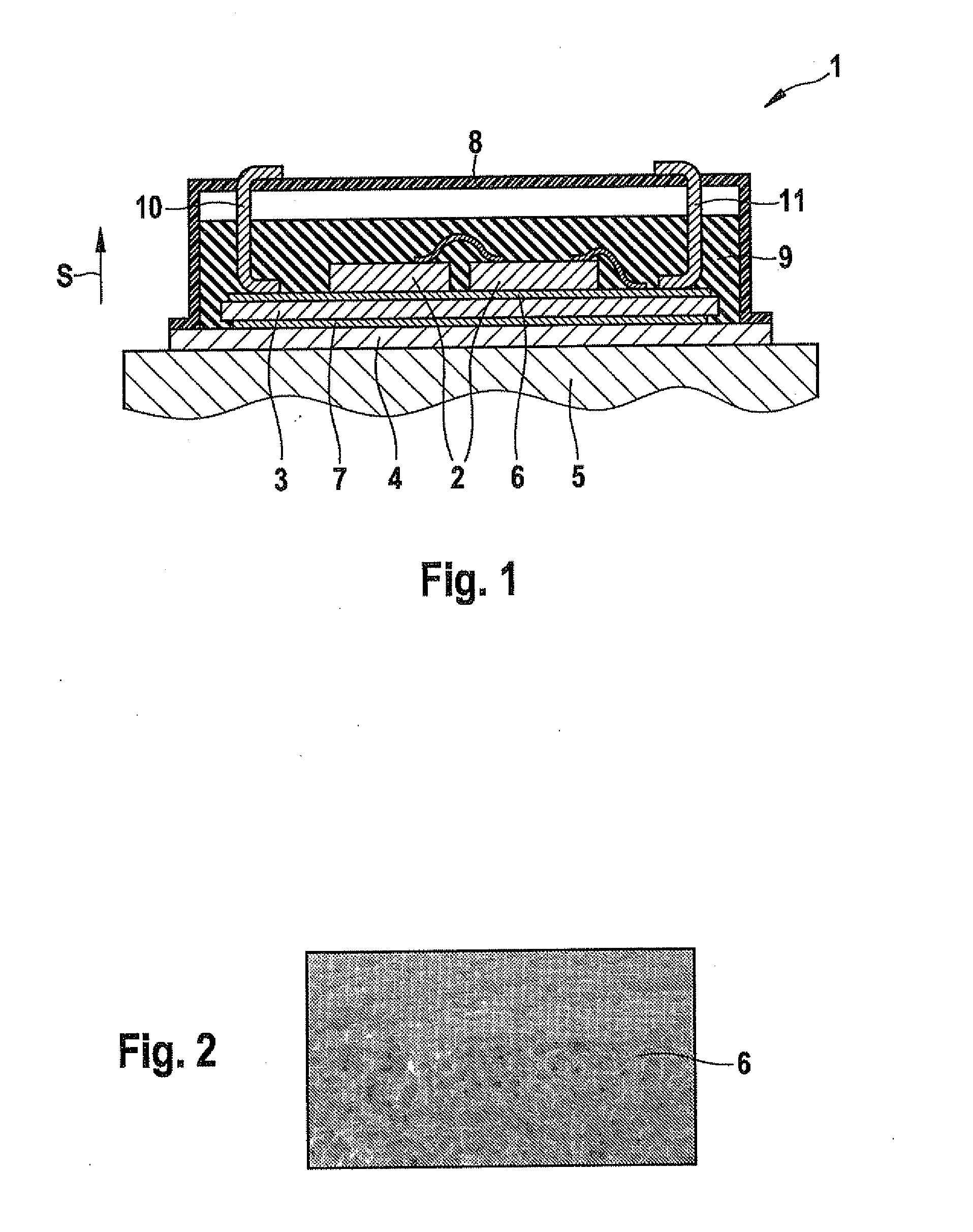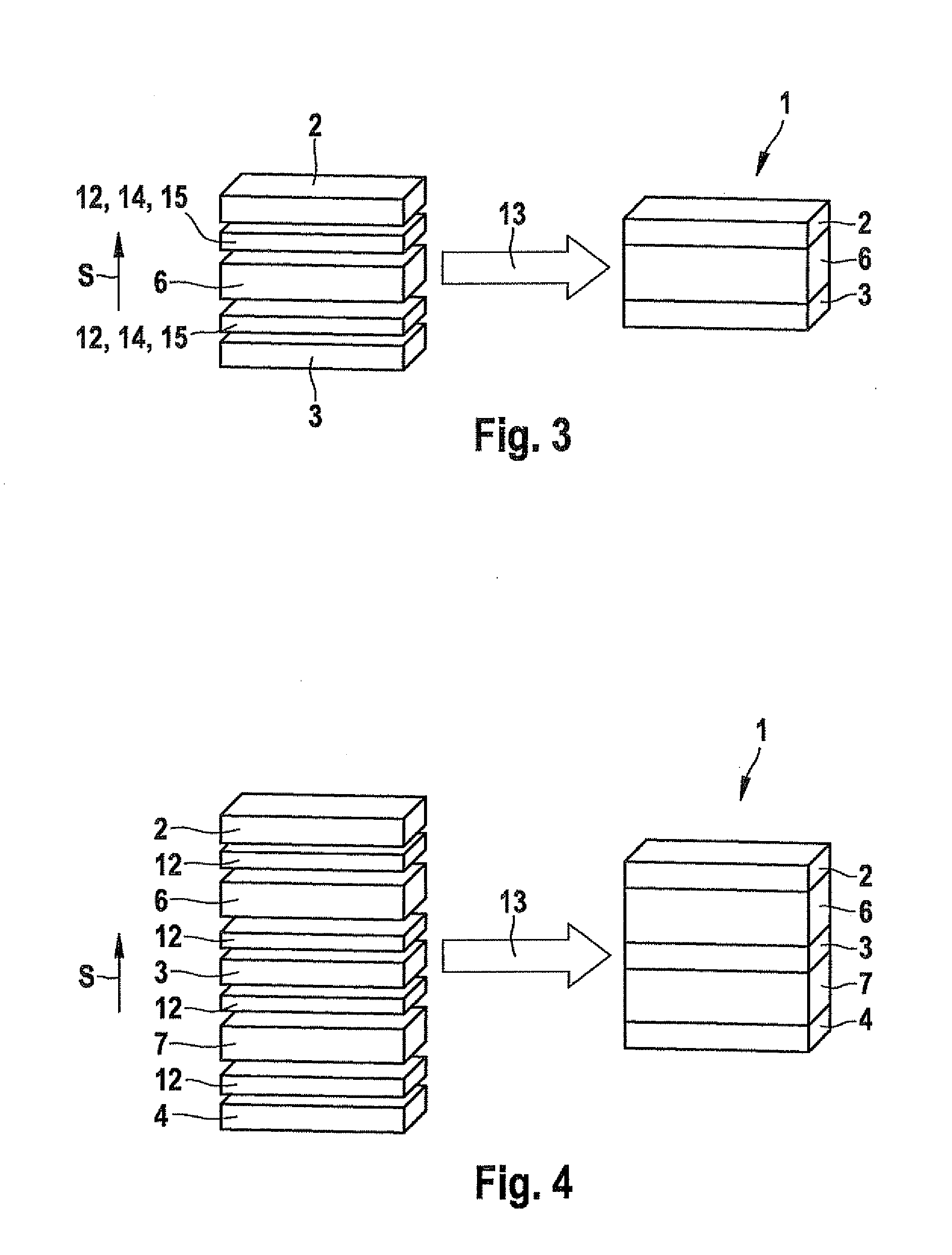Electrical or electronic composite component and method for producing an electrical or electronic composite component
a technology of composite components and components, applied in the direction of paper/cardboard containers, semiconductor/solid-state device details, containers, etc., can solve the problems of increased crack formation, limited reliability, and high volume of gas exchange, and achieve the effect of low cost and reproducibility
- Summary
- Abstract
- Description
- Claims
- Application Information
AI Technical Summary
Benefits of technology
Problems solved by technology
Method used
Image
Examples
Embodiment Construction
[0023]In the Figures, identical elements, and elements having identical function, are identified by the same reference characters.
[0024]FIG. 1 shows an electronic composite component 1. This component has a first joining partner 2, a second joining partner 3, and a third joining partner 4. In the depicted exemplary embodiment, first joining partner 2 is a power semiconductor component, here an 1 GB transistor. Second joining partner 3 is a circuit substrate, and third joining partner 4 is a base plate made of copper. The base plate made of copper is in turn fixed to a cooling element 5 (heat sink).
[0025]Between first joining partner 2 and second joining partner 3 there is situated a sintered compact 6 having a thickness of approximately 5 μm in a stack direction S. First joining partner 2 and second joining partner 3 are fixed to two oppositely situated sides of sintered compact 6, in each case by soldering using soldering paste (or, alternatively, for example soldering powder or a ...
PUM
| Property | Measurement | Unit |
|---|---|---|
| temperature | aaaaa | aaaaa |
| pressure | aaaaa | aaaaa |
| pressure | aaaaa | aaaaa |
Abstract
Description
Claims
Application Information
 Login to View More
Login to View More - R&D
- Intellectual Property
- Life Sciences
- Materials
- Tech Scout
- Unparalleled Data Quality
- Higher Quality Content
- 60% Fewer Hallucinations
Browse by: Latest US Patents, China's latest patents, Technical Efficacy Thesaurus, Application Domain, Technology Topic, Popular Technical Reports.
© 2025 PatSnap. All rights reserved.Legal|Privacy policy|Modern Slavery Act Transparency Statement|Sitemap|About US| Contact US: help@patsnap.com



